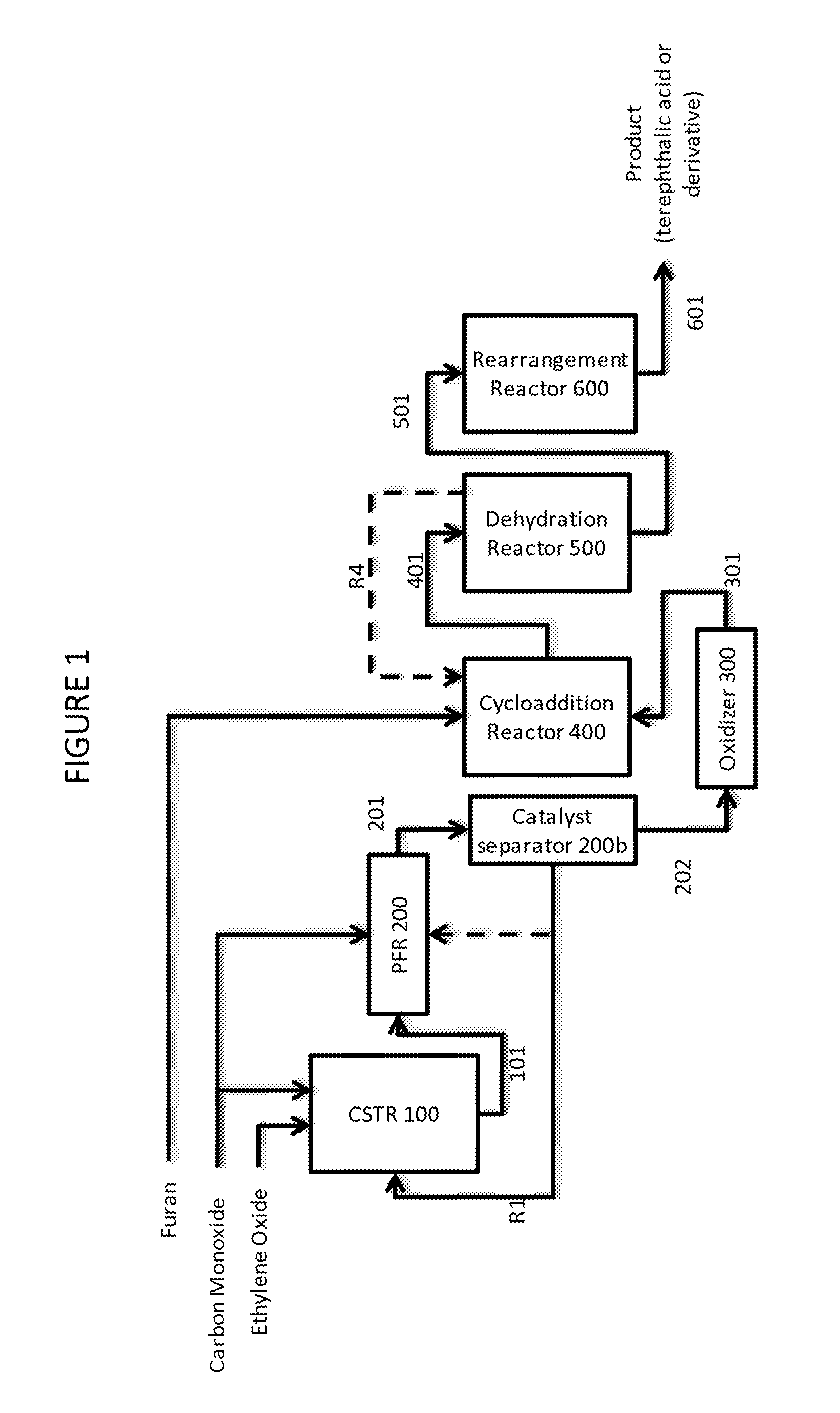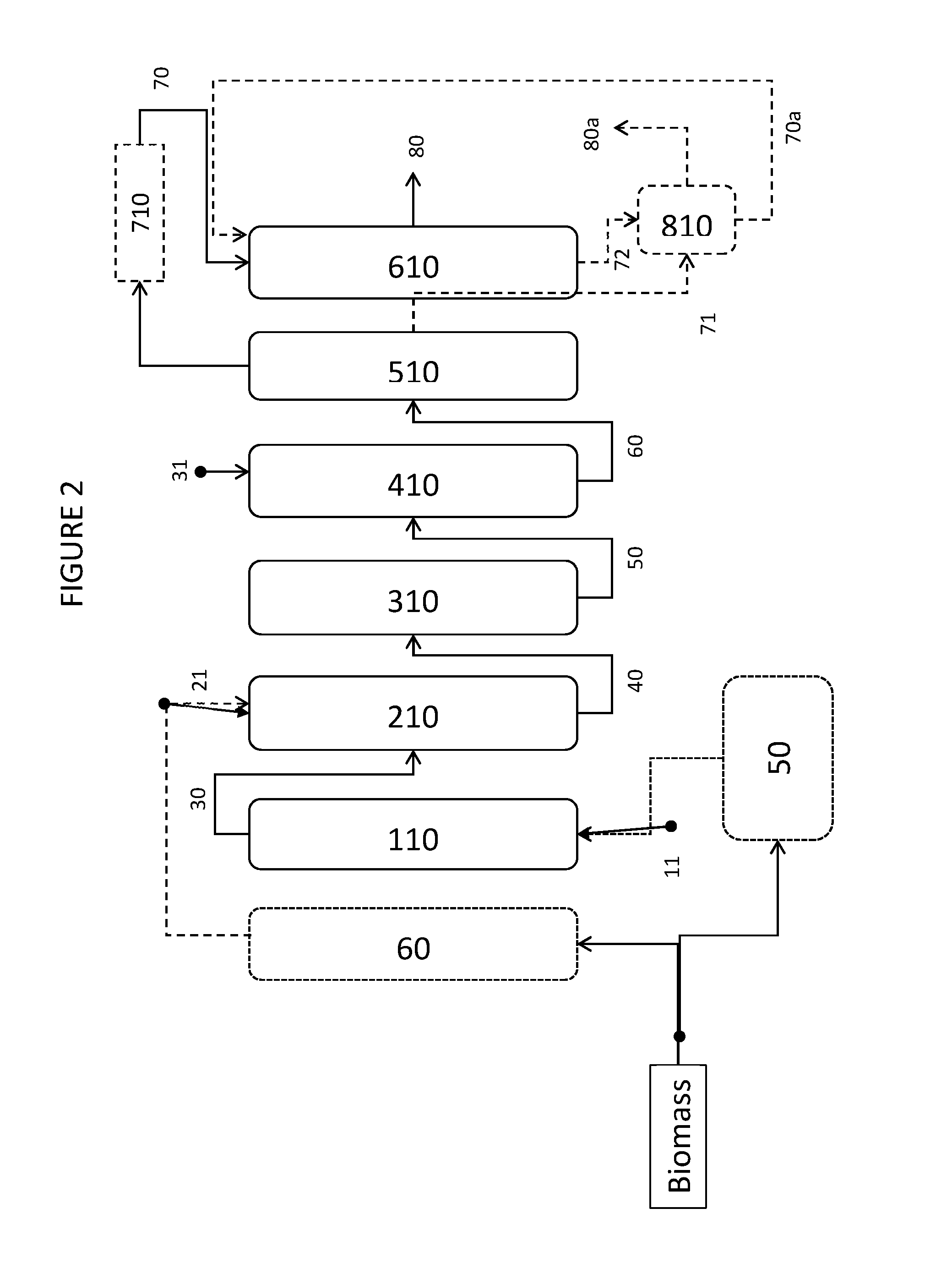Methods for production of terephthalic acid from ethylene oxide
a technology of ethylene oxide and terephthalic acid, which is applied in the field of methods for producing terephthalic acid from ethylene oxide, can solve the problems of inability to economically feasible biobased processes, and achieve the effect of high carbon efficiency and high yield
- Summary
- Abstract
- Description
- Claims
- Application Information
AI Technical Summary
Benefits of technology
Problems solved by technology
Method used
Image
Examples
example 1
Continuous Process for Terephthalic Acid Production from Ethylene Oxide, Carbon Monoxide and Furan
[0107]This example features a two stage continuous carbonylation process wherein the first carbonylation stage is operated at steady state in a continuous stirred tank reactor (CSTR) to produce a beta propiolactone stream and a second carbonylation stage where the beta propiolactone is converted to succinic anhydride in a plug flow reactor (PFR), with reference to FIG. 1:
[0108]A first carbonylation reaction zone comprising continuously stirred tank reactor CSTR 100 is fed with ethylene oxide and carbon monoxide. In the reactor, the ethylene oxide is contacted with carbon monoxide at superatmospheric pressure.
[0109]A first carbonylation product stream 101 comprising beta propiolactone, solvent, dissolved carbonylation catalyst and a fraction of unreacted ethylene oxide is taken from CSTR 100 and directed to a second carbonylation reaction zone, consisting of plug flow reactor PFR 200. PF...
example 1a
[0115]The process of Example 1a is operated according to the principles described above in Example 1 except the catalyst separator unit 200b comprises a nanofiltration unit. In this example, the succinic anhydride stream fed to oxidizer 300 contains solvent.
example 1b
[0116]The process of Example 1b is operated according to the principles described above in Example 1 except the succinic anhydride is reacted with water in stream 202 which then contains succinic acid. In a related example, stream 202 contains succinic anhydride, but oxidizer 300 is co-fed with water such that succinic acid is formed as an intermediate during the conversion in reactor 300.
PUM
| Property | Measurement | Unit |
|---|---|---|
| pressure | aaaaa | aaaaa |
| pressure | aaaaa | aaaaa |
| pressure | aaaaa | aaaaa |
Abstract
Description
Claims
Application Information
 Login to View More
Login to View More - R&D
- Intellectual Property
- Life Sciences
- Materials
- Tech Scout
- Unparalleled Data Quality
- Higher Quality Content
- 60% Fewer Hallucinations
Browse by: Latest US Patents, China's latest patents, Technical Efficacy Thesaurus, Application Domain, Technology Topic, Popular Technical Reports.
© 2025 PatSnap. All rights reserved.Legal|Privacy policy|Modern Slavery Act Transparency Statement|Sitemap|About US| Contact US: help@patsnap.com


